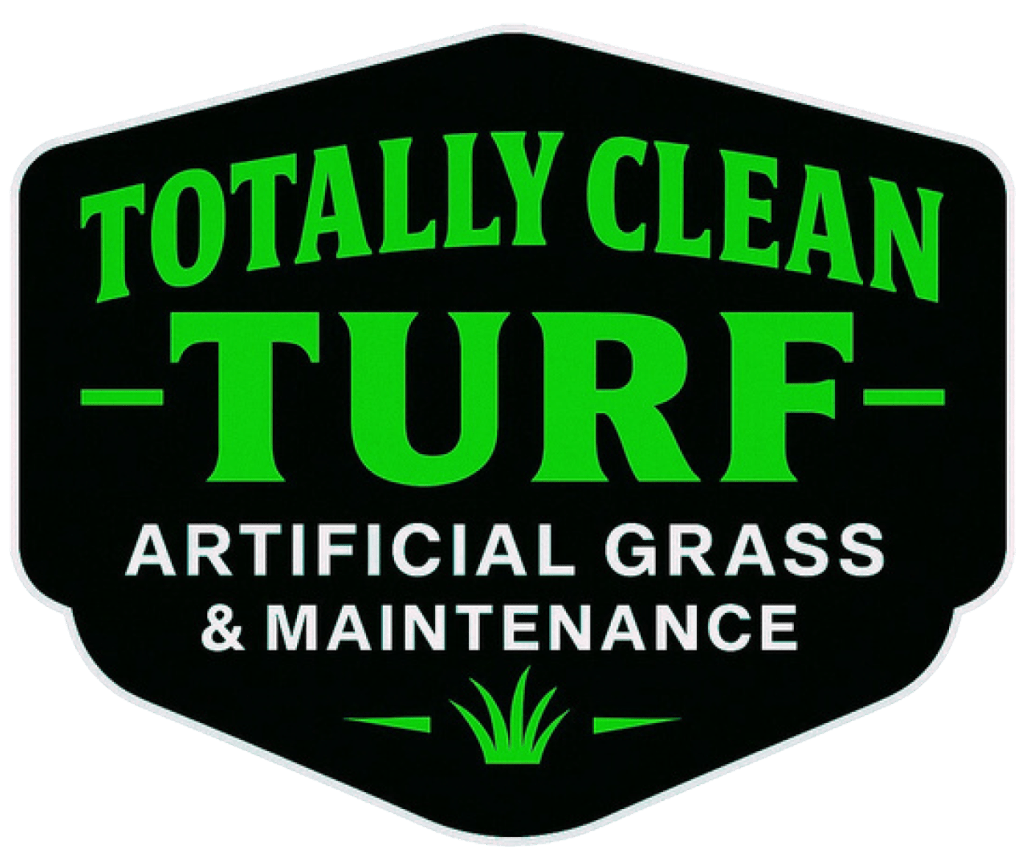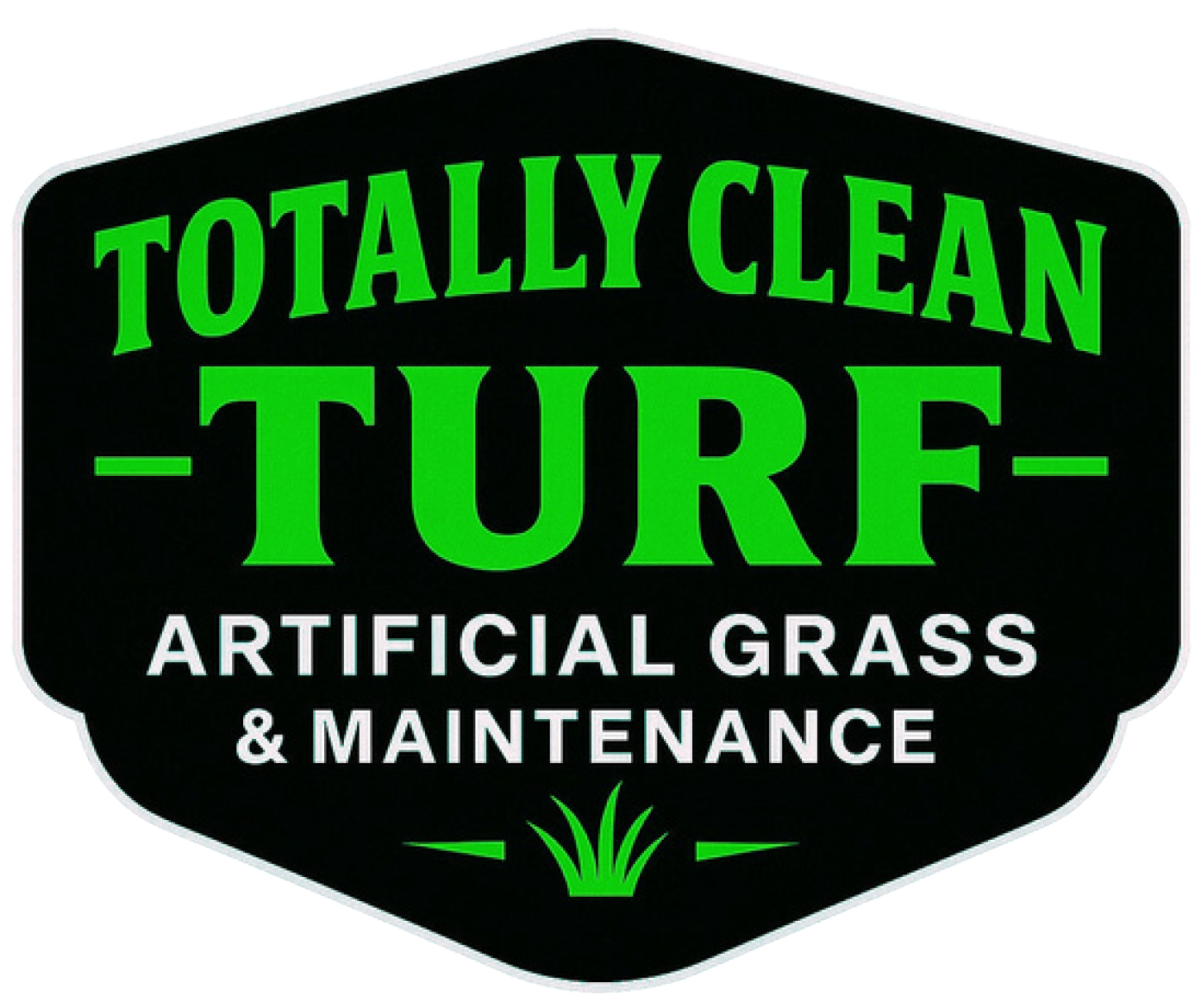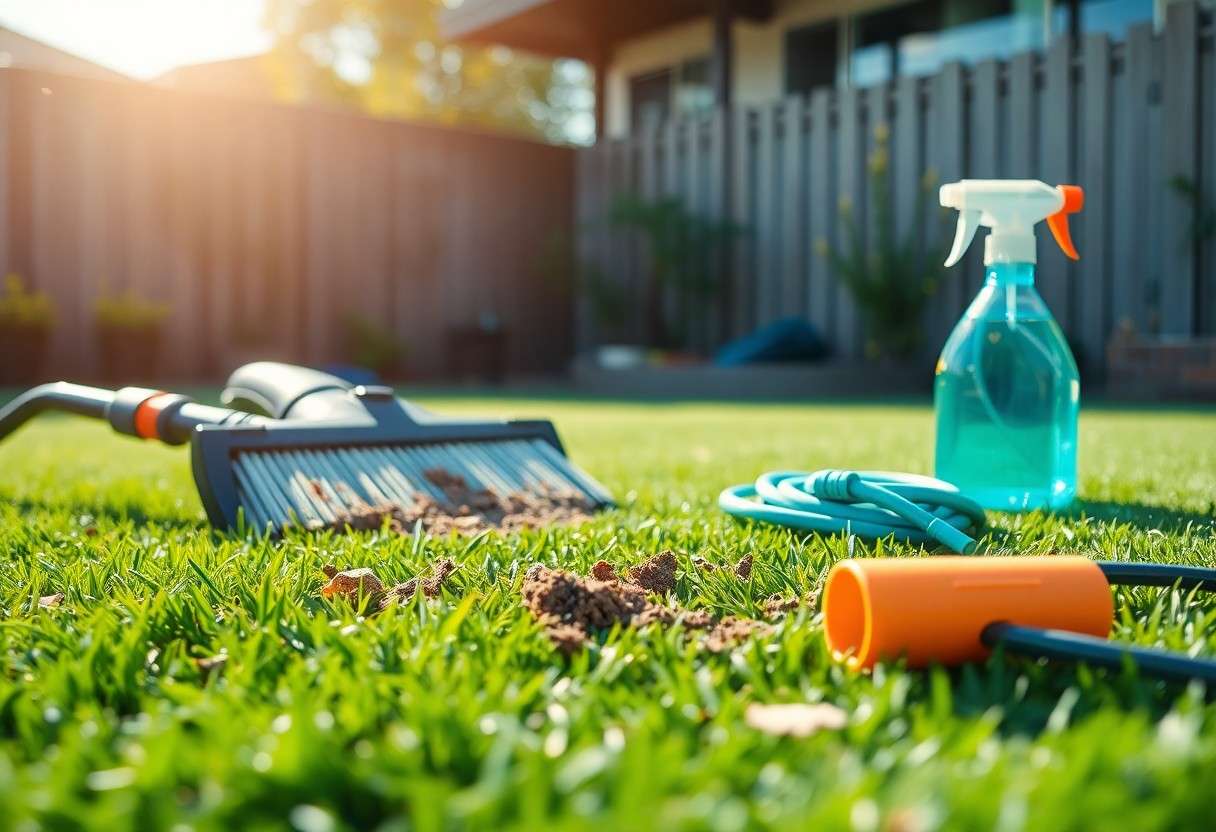Most artificial turf owners want their lawns to look fresh and inviting year-round, but knowing when your turf needs professional cleaning can be tricky. If you notice odors, flattened fibers, or excessive debris, these could be signs that your turf requires expert care. Understanding these indicators helps you maintain your lawn’s appearance, extend its lifespan, and keep it safe for pets and children. In this post, you’ll learn the top signs your artificial turf needs professional attention and the effective steps you can take to restore its pristine condition.
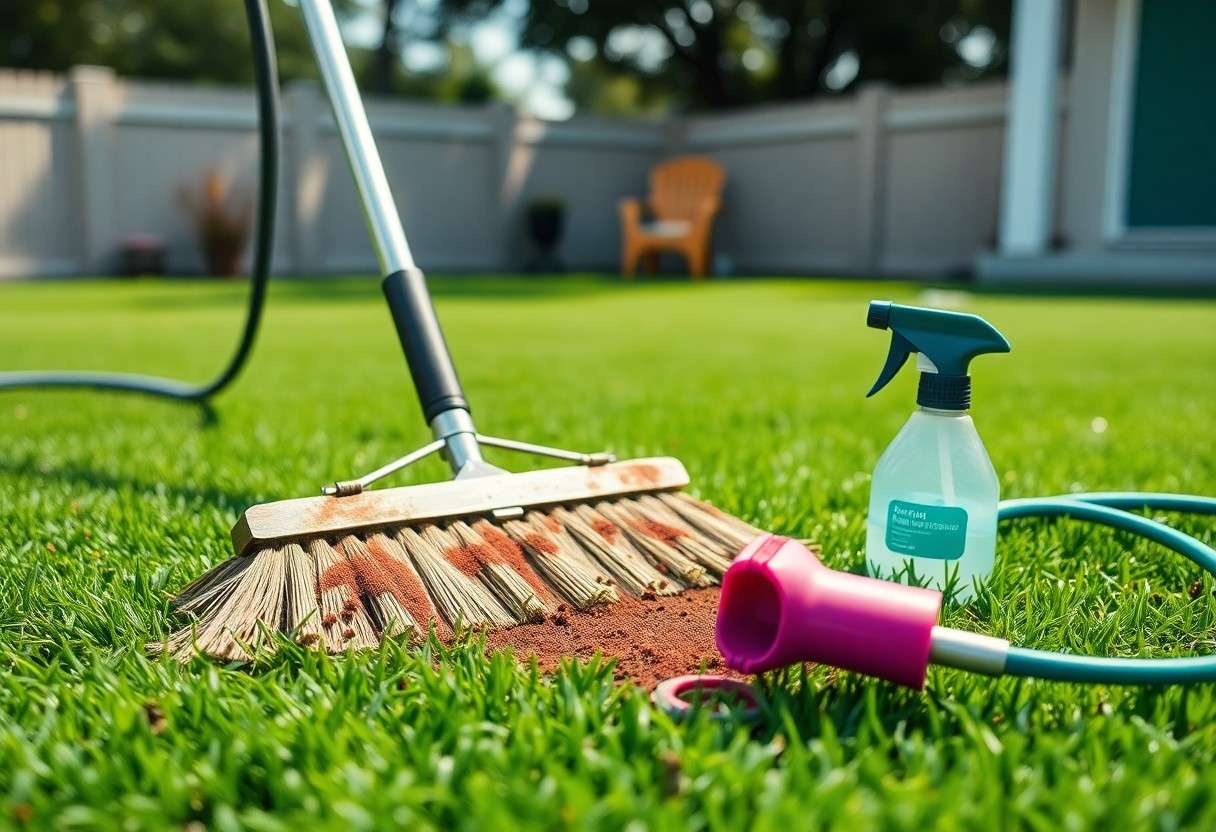
The Warning Signs of Neglected Turf
Artificial turf shows clear indicators when it’s time for professional attention. Changes in color, persistent odors, and increased wear all suggest underlying issues that can shorten turf lifespan and diminish its appeal. Ignoring these signs leads to reduced drainage, bacterial buildup, and fiber damage, making routine upkeep imperative. Recognizing these warning indicators promptly allows you to maintain a lush, safe, and inviting space for family, pets, or customers.
Discoloration and Fading: What Your Grass Is Telling You
If you notice your turf transitioning from vibrant green to patchy yellow or dull brown, prolonged exposure to UV rays and debris buildup might be to blame. These visual changes often indicate fiber breakdown or trapped dirt affecting the turf fibers. Left untreated, fading not only harms aesthetics but can also weaken the structural integrity of your synthetic grass, affecting its durability over time.
Persistent Odors: Identifying Underlying Issues
Lingering smells, especially in pet zones or high-traffic areas, point to organic matter trapped beneath the turf surface. Urine and other waste products can soak into the infill, creating bacterial concentrations that simple rinsing won’t resolve. These odor issues not only affect outdoor enjoyment but can also signal microbial growth that compromises sanitation and family safety.
Addressing persistent odors requires specialized pet turf odor removal treatments designed to neutralize and disinfect deep within the turf layers. Turf sanitizing services use eco-conscious cleaners and enzymes that break down odor-causing compounds while protecting fibers from damage. Ignoring these smells allows bacteria and mold to multiply, increasing health risks and accelerating turf deterioration, particularly in areas frequently used by pets and children.
Increased Wear and Tear: Signs of Overuse
Flattened fibers, compacted infill, and thinning areas often result from heavy foot traffic and repeated use, especially in playgrounds or dog runs. These signs reveal a need for turf decompaction and blooming to restore softness and bounce. Spotting uneven wear helps prevent damage from spreading and ensures the surface remains safe and comfortable.
High-traffic zones can compress the infill, reducing drainage and causing the turf fibers to lay flat, which decreases resilience and visual appeal. Regular turf decompaction reintroduces air and loosens compacted material, while turf blooming lifts fibers back to their original, plush state. Such maintenance not only extends turf life but also minimizes slip hazards and maintains an inviting appearance for both residential and commercial properties.
The Impact of Dirt and Debris on Turf Longevity
Dirt, leaves, and organic debris can accumulate quickly on artificial turf, causing it to lose its vibrant look and functional benefits. Over time, this buildup traps moisture, leading to mildew growth and accelerating fiber degradation. When dirt clogs drainage systems, water pools and weakens the turf’s backing, shortening its lifespan. Regular removal of debris not only preserves your turf’s appearance but also maintains optimal drainage and durability, extending the years you enjoy a lush, green lawn without the hassles of natural grass upkeep.
How Contaminants Affect Artificial Grass Performance
Contaminants like pet waste, pollen, and dust interfere with the turf’s ability to drain properly and keep fibers upright. Pet urine, in particular, can cause lingering odors and attract bacteria if left untreated. Organic matter compacts the turf blades, making surfaces hard and uncomfortable underfoot. Over time, contaminants degrade the infill material and backing, reducing softness, increasing wear, and diminishing overall performance. Professional turf cleaning targets these issues directly, restoring both comfort and safe usability for families and pets.
The Cost of Delayed Maintenance: Can You Afford to Wait?
Ignoring routine turf cleaning and maintenance can lead to costly repairs or complete replacement down the line. Patchy discoloration, fiber matting, and odor buildup don’t just hurt curb appeal—they signal deeper material breakdown. Turf that’s left compacted and dirty can cost thousands to restore, compared to regular maintenance fees that protect your investment at a fraction of that. Waiting too long risks costly downtime for commercial properties and the frustration of losing your clean, green oasis.
Beyond aesthetic decline, delayed turf maintenance can undermine soil stability and drainage integrity beneath your artificial grass system. Excessive debris and compressed infill reduce permeability, causing pooling that damages the turf backing and concrete or paver foundations if present. Repairs to damaged turf sections or underlying substrates often require significant labor and material costs—sometimes exceeding 30–50% of a new installation. Scheduling timely turf decompaction, odor removal, and sanitizing with professionals like Totally Clean Turf safeguards your landscape budget and keeps your outdoor spaces healthy and inviting.
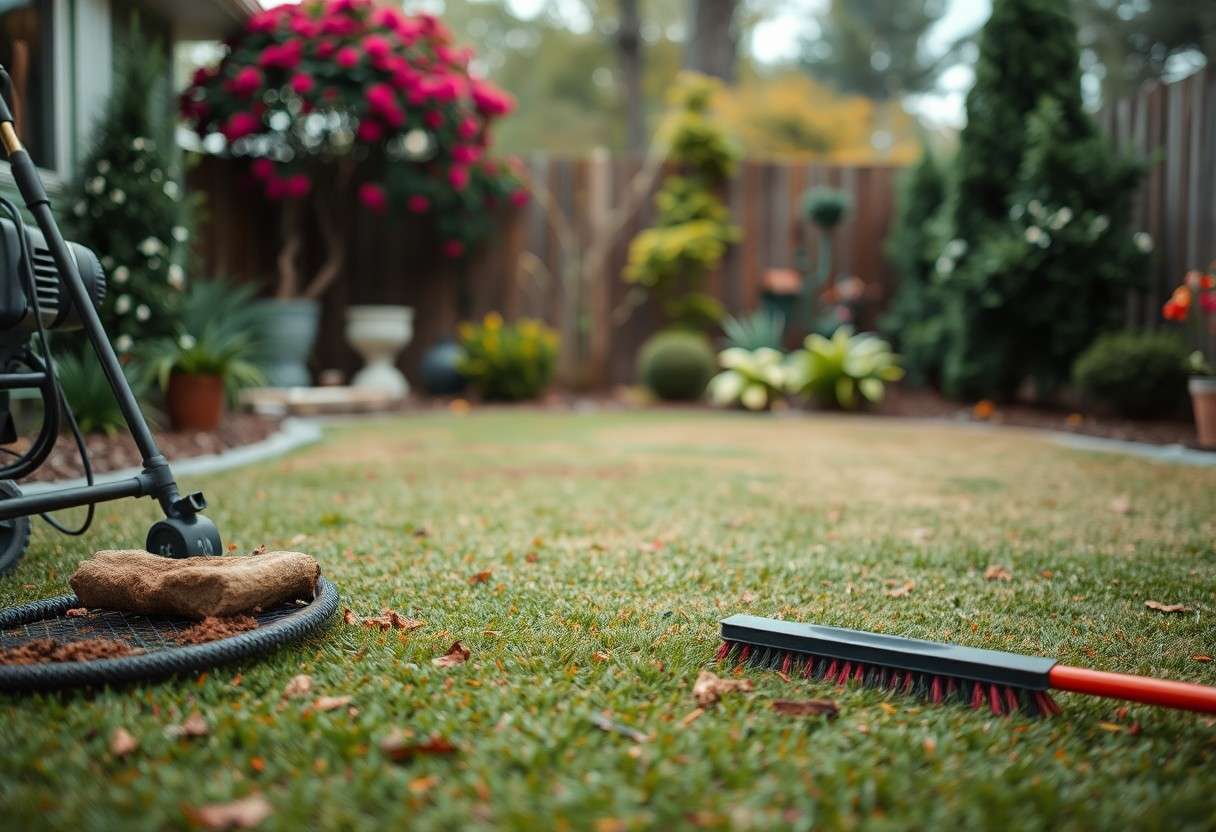
Why Professional Cleaning Is Worth the Investment
You might think a quick rinse will keep your turf fresh, but professional cleaning goes far beyond surface-level care. Expert technicians use specialized treatments to remove embedded dirt, pet odors, and bacteria that ordinary cleaning misses. This not only restores your lawn’s vibrant look but also prevents long-term damage like fiber matting or drainage problems. With licensed, insured pros like Totally Clean Turf, you’re investing in eco-friendly methods tailored to extend the life and safety of your synthetic grass, making every dollar spent a step toward lasting value and beauty.
Methods and Benefits of Specialized Turf Cleaning
Professional turf cleaning involves techniques like turf decompaction to loosen compacted infill, turf blooming to revive crushed fibers, and advanced odor removal formulas designed for pet areas. These methods improve drainage, soften the surface, and eliminate stubborn smells that typical cleaning can’t address. By targeting both aesthetics and hygiene, you ensure the turf remains safe for children and pets, while maintaining its natural look and feel, all backed by eco-conscious products that preserve your lawn and surrounding environment.
The Role of Maintenance in Preserving Your Turf’s Value
Regular maintenance protects your investment by keeping turf fibers upright, preventing infill displacement, and addressing minor wear before they escalate. Turf care services that include decompaction, sanitizing, and debris removal can extend turf lifespan by up to 5 years, reducing the need for costly replacement. Maintaining proper drainage and surface softness also preserves curb appeal and usability, ensuring your landscape continues to impress visitors and supports a healthy environment for kids and pets.
Beyond visual appeal, maintenance preserves the structural integrity of your artificial lawn. Decompaction restores infill distribution, which is vital for cushioning and drainage, maintaining consistent support underfoot. Consistent sanitizing clears bacteria and allergens, protecting family and pets from potential irritants. Regular grooming through turf blooming helps the blades rebound, preventing matting that accelerates fiber wear. These combined efforts allow your low-maintenance lawn to perform as intended for years, ultimately maximizing your initial investment and keeping your outdoor space safe and welcoming.
Best Practices for Maintaining Your Artificial Lawn
Regular upkeep shapes the longevity and appearance of your artificial turf. Combining routine debris removal with seasonal turf blooming and decompaction keeps the fibers resilient and drainage efficient. Address pet odors proactively using specialized odor removal and sanitizing treatments designed to neutralize organic smells, especially in dog runs or play areas. Pairing turf maintenance with professional cleanings enhances your lawn’s texture and safety, ensuring a lush, inviting landscape without the typical water use or mowing hassles.
Routine Inspection Checklists: What to Look For
Scan your turf for flattened or matted areas indicating fiber wear or compression, and check the infill depth to ensure even distribution. Look closely for debris buildup like leaves or organic matter that can trap moisture and promote odors. Pet urine spots often need targeted odor removal, while damaged seams or edges signal a need for repair. Also, monitor drainage performance during rain or irrigation to avoid pooling and support healthy turf function.
DIY Techniques vs. When to Call in the Experts
Light tasks like debris removal, minor brushing to fluff fibers, and occasional rinsing fall comfortably within DIY scope. However, persistent odors, deep turf decompaction, or large-scale sanitizing require professional-grade solutions and equipment. Experts can also identify hidden damage or compaction issues early, preventing costly replacements. When your turf serves heavily trafficked pet or playground areas, professional intervention preserves appearance, hygiene, and safety standards that DIY methods often can’t match.
Many homeowners handle surface cleaning through regular sweeping and rinsing, but problems like embedded pet odors or turf compaction respond best to professional care. Totally Clean Turf uses specialized turf decompaction tools that restore infill balance, something difficult to replicate at home. Their odor removal treatments chemically neutralize smells instead of masking them, safeguarding your pets’ and kids’ environments. Scheduling professional maintenance two to three times a year complements your routine, extending turf life and maintaining its lush, clean look year-round.
To wrap up
Summing up, if you notice your artificial turf looks flattened, smells unpleasant, feels hard underfoot, has visible debris buildup, or shows signs of discoloration, these are top signals that your turf needs professional cleaning. Addressing these issues promptly with expert turf maintenance, including deodorizing, sanitizing, and decompaction, will restore your lawn’s appearance and longevity. By taking action, you ensure your turf stays fresh, safe, and inviting for your family, pets, and guests all year round.
FAQ
Q: How can I tell if my artificial turf has developed unpleasant odors?
A: Unpleasant odors often result from pet urine, organic debris, or bacteria buildup on artificial grass. If you notice persistent smells even after rinsing with water, it’s a sign that professional pet turf odor removal and turf sanitizing services are needed to thoroughly clean and deodorize the surface.
Q: What are common visual signs that my turf fibers need restoration?
A: Flattened, matted fibers are a common indicator that the turf requires turf blooming. When grass blades lose their upright, plush appearance, professional turf blooming can revitalize the look and improve overall softness, making your lawn look fresh and inviting.
Q: Why is turf decompaction important for maintaining my artificial grass?
A: Over time, synthetic turf can become compressed in high-traffic areas, reducing drainage and making the surface feel hard. Turf decompaction services relieve this compression, enhance drainage, and restore the turf’s softness, extending its lifespan and usability.
Q: What should I do if my artificial turf has debris buildup like leaves and trash?
A: Debris buildup not only detracts from the turf’s appearance but can also lead to drainage problems and bacterial growth. Scheduling professional debris removal as part of regular turf maintenance ensures your lawn remains clean, healthy, and functional.
Q: How can professional playground turf cleaning benefit kids and families?
A: Playground areas experience heavy use and can harbor germs, allergens, and pet stains. Professional playground turf cleaning and sanitizing utilize specialized treatments that eliminate contaminants and create a safer, cleaner play environment suitable for children and families.
